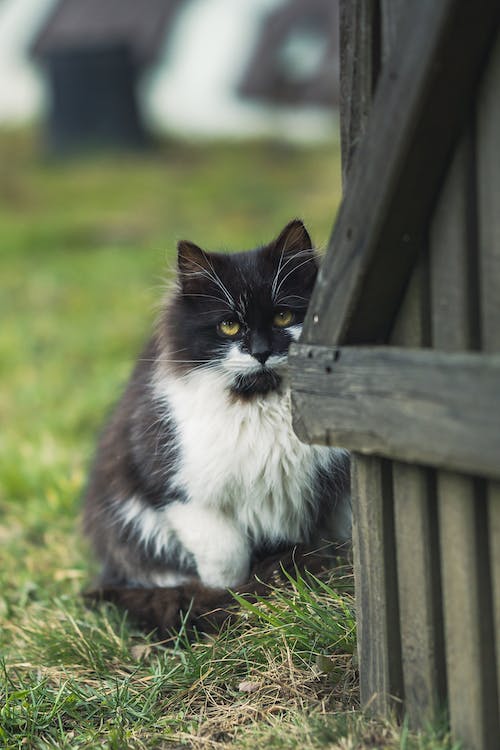A Guide to Grooming Your Long-Haired Cat


A Guide to Grooming Your Long-Haired Cat


Introduction
Grooming is an essential part of maintaining the health and appearance of your long-haired cat. Regular grooming not only keeps their coat clean and tangle-free but also helps prevent matting, skin issues, and excessive shedding. In this comprehensive guide, we will provide you with step-by-step instructions and valuable tips to help you groom your long-haired cat effectively. From brushing techniques to nail trimming and ear cleaning, this guide will ensure that your feline friend stays happy, healthy, and looking their best.
Essential Grooming Tools
Before you begin grooming your long-haired cat, gather the following essential grooming tools:
1. Slicker Brush
A slicker brush is ideal for removing tangles, mats, and loose hair from your cat’s coat. Choose a brush with fine, gentle bristles to prevent scratching or irritating the skin.
2. Stainless Steel Comb
A stainless steel comb with both wide and narrow teeth is useful for further detangling and removing any remaining loose hair.
3. Nail Clippers
Invest in high-quality cat nail clippers or a nail trimmer specifically designed for cats. Make sure they have a sharp blade and a comfortable grip for ease of use.
4. Cat-Safe Shampoo
Select a cat-safe shampoo that is gentle on the skin and specifically formulated for long-haired cats. Avoid using human shampoos, as they can be too harsh and cause skin irritation.
5. Ear Cleaning Solution
Choose a gentle, vet-approved ear cleaning solution to clean your cat’s ears. Avoid using cotton swabs or any sharp objects inside the ears, as this can cause injury.
Brushing Your Long-Haired Cat
Regular brushing is key to preventing tangles, mats, and excessive shedding in long-haired cats. Follow these steps to brush your cat effectively:
1. Create a Calm Environment
Choose a quiet and comfortable space where your cat feels relaxed. Use treats or toys to help create a positive association with the grooming process.
2. Start with Short Sessions
For cats that are not used to brushing, begin with short grooming sessions and gradually increase the duration as they become more comfortable.
3. Brush in the Direction of Hair Growth
Using a slicker brush, gently brush your cat’s fur in the direction of hair growth. Start from the head and work your way down the body, paying extra attention to areas prone to tangles, such as the armpits, chest, and belly.
4. Detangle and Remove Loose Hair
If you encounter tangles or mats, use a stainless steel comb to carefully work through them. Start at the edges of the tangle and gently tease it apart. Be patient and avoid pulling on the fur, as this can cause discomfort.
5. Brush Regularly
Make brushing a regular part of your cat’s routine. Aim to brush your long-haired cat at least once a day, or more frequently during shedding seasons, to prevent matting and keep the coat healthy and shiny.
Bathing Your Long-Haired Cat
Bathing your long-haired cat is necessary to keep their coat clean and free from dirt and debris. Here’s how to bathe your cat:
1. Prepare the Bathing Area
Choose a small, enclosed space like a bathroom and gather all the necessary bathing supplies, including cat-safe shampoo, towels, and a non-slip mat.
2. Brush Before Bathing
Before bathing, thoroughly brush your cat’s coat to remove any tangles or mats. This will makethe bathing process easier and prevent further matting.
3. Use Lukewarm Water
Fill a sink or bathtub with lukewarm water. Avoid using hot water, as it can be uncomfortable for your cat. Test the water temperature with your wrist or a thermometer to ensure it’s not too hot or too cold.
4. Wet and Shampoo
Gently wet your cat’s coat with the water, taking care to avoid their face and ears. Apply a small amount of cat-safe shampoo and lather it through their fur, starting from the neck and working your way down to the tail. Be cautious around the face, using a damp cloth to clean the area.
5. Rinse Thoroughly
Rinse your cat’s fur thoroughly, making sure to remove all traces of shampoo. Leftover shampoo can irritate their skin and cause discomfort.
6. Towel Dry
Wrap your cat in a soft towel and gently pat their fur to remove excess water. Avoid vigorous rubbing, as it can cause tangles or frizz. If your cat tolerates it, you can use a hairdryer on the lowest heat setting, keeping it at a safe distance from their fur.
7. Reward and Comfort
After bathing, reward your cat with treats or praise to associate the experience with something positive. Provide a warm and cozy space for them to relax and dry off completely.
Nail Trimming
Regular nail trimming is important to prevent overgrowth and discomfort for your cat. Follow these steps to trim your cat’s nails:
1. Choose a Quiet Time and Place
Find a quiet and calm environment where your cat feels comfortable. Make sure there is sufficient lighting to see the nails clearly.
2. Use Cat-Specific Nail Clippers
Use cat-specific nail clippers or a nail trimmer designed for cats. Ensure that the blades are sharp and clean.
3. Gently Hold Your Cat’s Paw
Gently hold your cat’s paw, applying gentle pressure to extend the claws. Be careful not to squeeze or cause any discomfort.
4. Identify the Quick
Identify the quick, the pink area within the nail that contains blood vessels and nerves. Be cautious not to cut into the quick, as it can cause bleeding and pain.
5. Trim the Tips
Trim the sharp tips of the claws, taking care to avoid the quick. Make small, gentle cuts to minimize the risk of cutting too deeply.
6. Offer Treats and Praise
Reward your cat with treats and praise after each successful nail trimming session. This positive reinforcement will help them associate the experience with something pleasant.
Ear Cleaning
Regular ear cleaning is important to prevent wax buildup and ear infections in your cat. Follow these steps to clean your cat’s ears:
1. Choose a Quiet and Calm Environment
Find a quiet area where your cat feels comfortable and secure. Use treats or soothing words to help them relax.
2. Examine the Ears
Gently examine your cat’s ears for any signs of redness, discharge, or unusual odor. If you notice any abnormalities, consult your veterinarian before proceeding with the cleaning process.
3. Use a Vet-Approved Ear Cleaning Solution
Select a vet-approved ear cleaning solution specifically formulated for cats. Avoid using cotton swabs or any sharp objects inside the ears, as this can cause injury.
4. Apply the Solution
Place a few drops of the ear cleaning solution into your cat’s ear, following the product instructions. Gently massage the base of the ear to distribute the solution.
5. Wipe and Remove Debris
Using a soft cotton ball or gauzepad, gently wipe the visible part of the ear, removing any debris or excess solution. Be cautious and avoid inserting anything into the ear canal.
6. Offer Comfort and Reward
After cleaning, offer your cat comfort and praise for their cooperation. Provide treats or playtime to reinforce positive behavior during the ear cleaning process.
Conclusion
Regular grooming is essential for maintaining the health and appearance of your long-haired cat. By following the steps outlined in this guide, you can ensure that your feline friend stays clean, tangle-free, and happy. Remember to approach grooming with patience, offer rewards and positive reinforcement, and seek professional help if needed. With proper grooming techniques and a loving touch, you can keep your long-haired cat looking their best while strengthening the bond between you and your furry companion.








